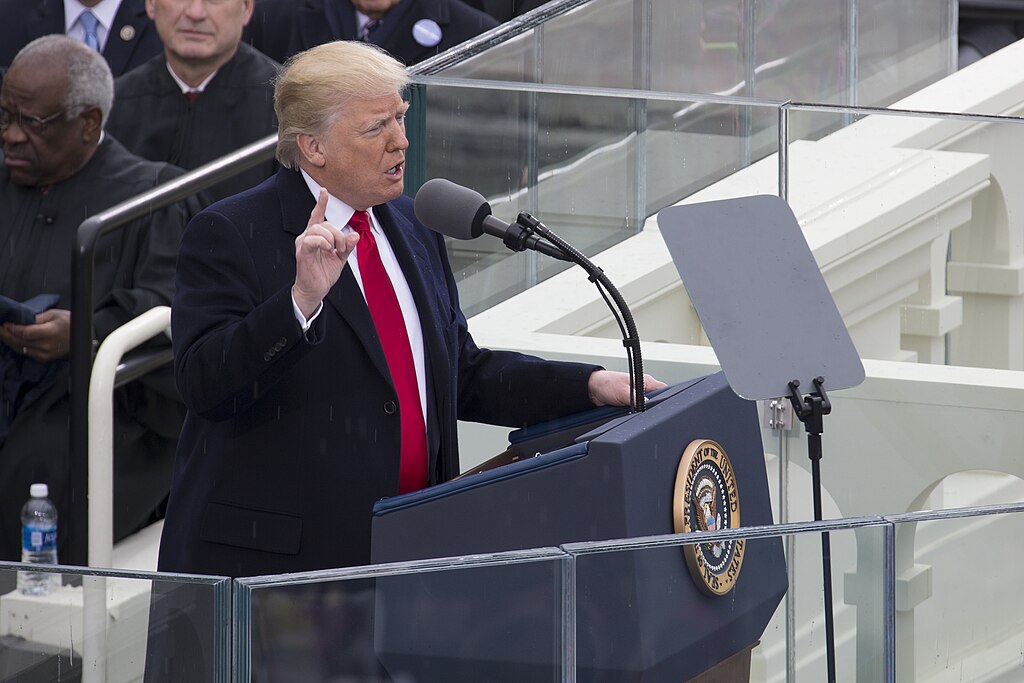As Donald Trump embarks on his second term, his administration is unveiling an ambitious plan to address international conflicts in 2025. Promising a mix of diplomacy, strategic alliances, and assertive action, Trump aims to position the United States as the primary peace broker on the global stage. While supporters laud his bold vision, critics question the feasibility and motives behind his proposed strategies.
Central to Trump’s approach is his commitment to reducing American military presence overseas while strengthening economic partnerships to foster stability. The administration plans to leverage these partnerships to mediate ongoing disputes, particularly in regions like the Middle East and Eastern Europe, where tensions remain high. Trump’s team asserts that these efforts will not only end conflicts but also enhance America’s global standing.
However, the plan has already drawn skepticism from foreign policy experts and international leaders, many of whom remain wary of Trump’s unilateral decisions during his first term.
Key Focus Areas: Middle East and Eastern Europe
The Middle East remains a primary focus of Trump’s peace initiative. His administration is reportedly seeking to revive the Abraham Accords, with a renewed push to expand the agreement to include Saudi Arabia. By fostering economic cooperation and mutual security guarantees, Trump aims to reduce hostilities between Israel and neighboring Arab states.
In Eastern Europe, Trump’s strategy includes negotiations to end the ongoing conflict between Russia and Ukraine. His team is exploring incentives, such as lifting certain sanctions on Russia in exchange for a ceasefire and territorial agreements. Critics warn that this approach risks undermining U.S. allies in NATO, who view a firm stance against Russian aggression as essential.
While Trump’s administration emphasizes diplomacy, it has also signaled a willingness to use military force if necessary to protect American interests. This dual approach reflects the administration’s belief in combining strength with negotiation.
Social Media Erupts Over Trump’s Conflict Resolution Plans
The announcement of Trump’s strategy to address international conflicts has sparked widespread debate online, with social media users voicing both support and criticism.
- @WorldWatcher2025: “Bold move by Trump, but peace requires more than deals. Will his plans withstand global scrutiny?”
- @MiddleEastExpert: “Expanding the Abraham Accords is ambitious, but will it address the root causes of regional conflicts?”
- @RealAmericaFirst: “Trump is the only leader with the guts to bring real peace to the world. #WinningAgain.”
- @EUObserver: “Reducing sanctions on Russia for peace? That’s a dangerous gamble. NATO needs to stay united.”
- @PeaceAdvocate: “If Trump pulls this off, it could be a game-changer. Let’s hope for lasting solutions.”
- @PolicyCritic: “Trump’s foreign policy is a mixed bag. Big promises, but can he deliver on peace?”
A Pivotal Year for Global Diplomacy
Donald Trump’s 2025 plans to address international conflicts represent a high-stakes effort to reshape global dynamics. With ambitious goals in the Middle East and Eastern Europe, the administration’s success or failure will have far-reaching implications. While some view Trump’s strategy as a potential pathway to peace, others warn of unintended consequences. As the world watches closely, the effectiveness of these plans will likely define Trump’s legacy in international relations.



 Maduro Confirms “Respectful” Call With Trump, Signals Openness to Diplomatic Dialogue
Maduro Confirms “Respectful” Call With Trump, Signals Openness to Diplomatic Dialogue  Pentagon Probe Finds Hegseth’s Use of Signal Risked Exposing Sensitive Yemen Strike Details
Pentagon Probe Finds Hegseth’s Use of Signal Risked Exposing Sensitive Yemen Strike Details  New Orleans Immigration Crackdown Sparks Fear as Federal Arrests Intensify
New Orleans Immigration Crackdown Sparks Fear as Federal Arrests Intensify  Israel Receives Body of Deceased Hostage as Rafah Crossing Reopening Hinges on Final Returns
Israel Receives Body of Deceased Hostage as Rafah Crossing Reopening Hinges on Final Returns  Taiwan Signals Openness to Renew Ties with Honduras as Election Unfolds
Taiwan Signals Openness to Renew Ties with Honduras as Election Unfolds  Trump Pardons Former Honduran President Juan Orlando Hernández in Controversial Move
Trump Pardons Former Honduran President Juan Orlando Hernández in Controversial Move  Trump’s Name Appears on U.S. Institute of Peace Ahead of Rwanda–Congo Deal Signing
Trump’s Name Appears on U.S. Institute of Peace Ahead of Rwanda–Congo Deal Signing  Michael Dell Pledges $6.25 Billion to Boost Children’s Investment Accounts Under Trump Initiative
Michael Dell Pledges $6.25 Billion to Boost Children’s Investment Accounts Under Trump Initiative  U.S. Soybean Shipments to China Gain Momentum as Trade Tensions Ease
U.S. Soybean Shipments to China Gain Momentum as Trade Tensions Ease  California Launches Portal for Reporting Alleged Misconduct by Federal Immigration Agents
California Launches Portal for Reporting Alleged Misconduct by Federal Immigration Agents  Putin Concludes High-Level Talks With Trump Envoy on Ending Ukraine Conflict
Putin Concludes High-Level Talks With Trump Envoy on Ending Ukraine Conflict  Hong Kong Faces Low Turnout in “Patriots-Only” Election Amid Public Grief After Deadly Fire
Hong Kong Faces Low Turnout in “Patriots-Only” Election Amid Public Grief After Deadly Fire  Trump Administration Tightens H-1B Visa Vetting With New Focus on Free Speech and Censorship
Trump Administration Tightens H-1B Visa Vetting With New Focus on Free Speech and Censorship  Trump Administration Halts Immigration, Green Card, and Citizenship Processing for 19 Countries
Trump Administration Halts Immigration, Green Card, and Citizenship Processing for 19 Countries  Federal Judge Blocks Trump Administration’s Medicaid Funding Restrictions Targeting Planned Parenthood
Federal Judge Blocks Trump Administration’s Medicaid Funding Restrictions Targeting Planned Parenthood  Trump Administration Plans Major Rollback of Biden-Era Fuel Economy Standards
Trump Administration Plans Major Rollback of Biden-Era Fuel Economy Standards  UN General Assembly Demands Russia Return Ukrainian Children Amid Ongoing Conflict
UN General Assembly Demands Russia Return Ukrainian Children Amid Ongoing Conflict 



























